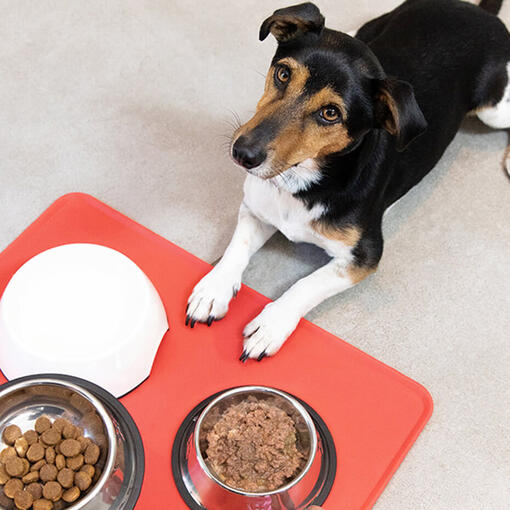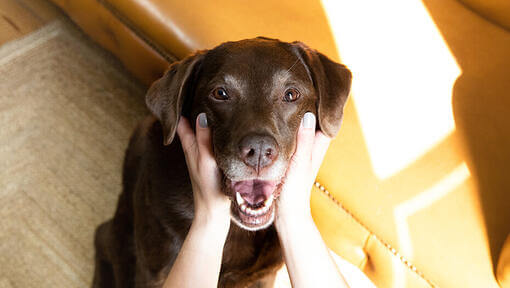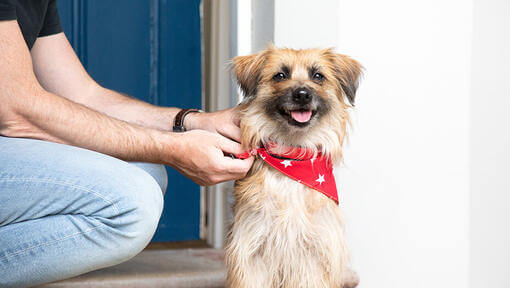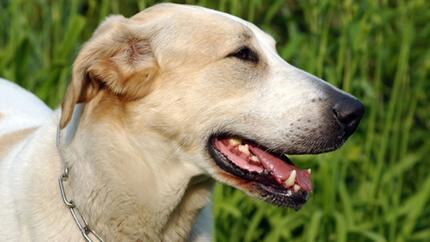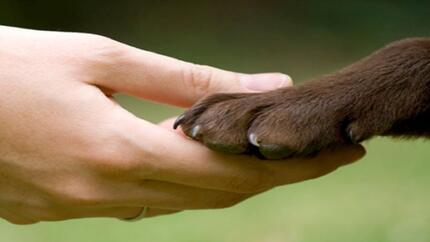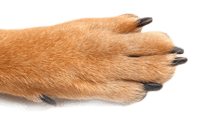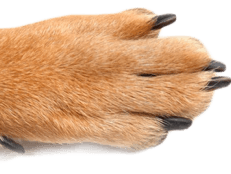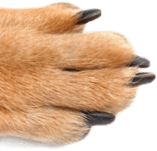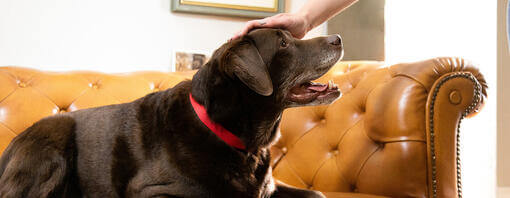
Le toilettage ne consiste pas seulement à embellir votre chien, c'est aussi un facteur essentiel de la santé générale de votre animal de compagnie. Apprenez à lui faire une toilette efficace.
Soins du pelage
Le toilettage ne consiste pas seulement à donner une belle apparence à votre chien. Un entretien régulier permet d’éliminer les poils morts, de garantir une peau et un pelage sains et de vérifier l’état de santé général de votre animal de compagnie. Il s’agit également d’un moment essentiel que vous partagez avec votre animal et qui vous permet de développer votre relation, d’instaurer un lien de confiance et de mieux vous comprendre. Il a par ailleurs été prouvé scientifiquement que les séances de toilettage réduisaient le stress et la tension artérielle du chien... et du maître !
Quand effectuer le toilettage ?
Que le pelage de votre chien soit long ou court, gros ou fin, il nécessite certains soins. La plupart des vétérinaires recommandent un toilettage quotidien afin d’éviter les noeuds. Cela permet également de réduire la quantité de poils que votre chien perd.
Matériel
Commencez le toilettage à l’aide d’une brosse à double face – une face avec des poils doux et l’autre avec des dents arrondies en acier inoxydable (brosse à poils en tête d’épingle). Si votre chien possède de longs poils, il se peut que vous ayez aussi besoin d’un peigne avec de larges dents et un angle de 90° entre les dents et la poignée.
Les peignes contribuent à défaire les noeuds de poils. Vous aurez également besoin d’un gant de toilettage en caoutchouc. Les gants en caoutchouc font l’effet de caresses vigoureuses, raison pour laquelle les chiens ont tendance à les apprécier.
Le toilettage étape par étape
Utilisez d’abord vos doigts pour défaire doucement les amas de poils de la peau sensible. N’utilisez jamais de ciseaux pour couper les amas de poils. Préférez le peigne autour de la tête et du cou, pour la zone entourant l’anus et le bas de la queue, les pattes et le bas de l’abdomen. Si vous utilisez un peigne, brossez dans le sens du poil. Utilisez des gants de toilettage en caoutchouc avec leurs dents en caoutchouc aux extrémités émoussés pour ôter les poils du pelage.
Tonte du pelage
Il peut s’avérer important de tondre le pelage lorsque les amas de poils sont importants et qu’ils ne peuvent pas être ôtés manuellement sans difficulté. Pendant les fortes chaleurs de l’été, votre chien vous en sera reconnaissant. En cas de doutes, faites appel à un toiletteur professionnel.
D’autres raisons pratiques peuvent justifier la tonte du pelage de votre chien, notamment si des poils lui tombent devant les yeux ou bien par mesure d’hygiène. Rappelez-vous aussi que la tonte n’est pas appropriée dans certaines situations, par exemple si le chien a de longs poils entre les orteils.
Toilettage professionnel
Des amas de poils ou des noeuds importants peuvent présenter des difficultés au niveau du toilettage. S’ils ne sont pas traités, ils peuvent accélérer la formation d’amas des poils environnants. Si votre chien a un pelage difficile, qu’il apprécie une baignade quotidienne dans l’étang ou que vous préférez la marche au toilettage, envisagez une visite régulière chez un toiletteur professionnel. Entre autre services, un bon toiletteur offre un bain relaxant, un séchage doux des poils ainsi qu’un brossage complet. Si vous demandez des conseils, vous serez surpris de tout ce que vous apprendrez.
Certaines races, telles que les caniches et les bichons à poils frisés, ne perdent pas leurs poils naturellement et nécessitent donc un toilettage professionnel régulier.
Nail clipping is not a common activity among dog owners. Your dog’s nails will get shortened naturally by friction during walking, particularly on pavements and other hard surfaces. Some dogs will have their nails trimmed during vet visits or at the groomers. If your pet needs regular trims and you want to give it a try, get advice first. Ask a vet or vet nurse to show you how to check the length of your dog’s claws and how to clip them without catching the quick and causing a bleed.
Make sure you use clippers designed for dogs as their nails are much thicker than ours, and using something blunt can cause a painful tear. If your dog has clear/white nails you should be able to see the quick of their nail which will be pink. Do not trim the nail too close to this, as catching the quick will be very sore and cause a lot of bleeding. In dogs with dark nails you cannot see the quick, so you should only cut the nails in line with the surface of their pad. However, there is a lot of variation in quick length between individuals so take care as they can be quite long in some pets.
Hold the paw gently, keep the clippers parallel to the nail and keep a treat handy to reward your dog’s good behaviour. Regardless of nail colour, only trim little pieces at a time – otherwise you may inadvertently remove a large piece of nail if your pet moves suddenly.
If an accident happens during nail clipping, apply pressure using a clean dressing if possible and if your pet will allow. If the bleeding does not stop after five minutes, contact a vet for advice. Your pet may need an appointment to check whether any treatment is necessary.
If you notice a torn or broken nail, do not attempt to cut this yourself as it will be extremely sore. However, these should not be left as it can lead to infection, or they can become caught and rip. Your pet will need an appointment with a vet and it's best not to feed them beforehand in case they require sedation for treatment.
Brushing your dog’s hair will help avoid fur matting and reduce shedding. Your vet may stock a range of brushes and combs designed for dogs or you can visit your local pet shop. You will likely see quite a selection, including rubber brushes, grooming mitts and slicker brushes. Choose the one that is suitable for your dog’s coat and, if in doubt, ask for advice. Don’t forget to disentangle any knots if you are planning to bathe your dog as shampooing will often cause the matting to get worse.
There are special dog toothbrushes and toothpaste that will help keep their teeth clean and their gums healthy. Knowing how to look after your dog’s teeth is one of the most important parts of learning how to groom a dog. Start slowly, systematically and have a treat at the ready to reward their good behaviour. You can start just by using the toothbrush alone, without any toothpaste, as this will help your dog become used to the sensation of having their teeth brushed. However, other pets enjoy the taste of the special dog tooth-paste as it is often meaty in flavour! You should never use human toothpaste as this can contain the sweetener xylitol which is toxic to dogs. If your dog is not tolerating tooth-brushing do not put yourself at risk of a nip. You can speak to your vet for tips, or for other dental care alternatives.
Not all dogs like baths and they won’t need one too frequently, but if you find yourself with the task of cleaning a dog who’s just had the time of their lives rolling in the mud or fox poo, here are a few helpful tips. Before dipping your dog in the bath, make sure you have everything you need nearby, from dog shampoo to brushes and towels. Get your dog’s coat knot-free before getting it wet. And wherever you choose to bath your dog, the sink or the bathtub, place a towel or a rubber mat at the bottom to offer your dog a surface they can grip onto. If your dog has sensitive skin, they may need special shampoo that minimises irritation to their skin. If your dog develops a rash or itching after bathing, speak to a vet for advice.
Cleaning the ears is not necessary in most individuals and can cause problems and infections if done incorrectly. However, if your dog has a history of ear disease, a vet may advise regular cleaning to help keep recurrence at bay. You will need cotton wool pads, ear cleaner, a towel and, if possible, a second pair of hands. Put a few drops of ear cleaner into their ear canal, massage the base of the ear to make sure the solution gets evenly distributed inside and wipe away the outer surface of the ears with the cotton wool pad. Use a different pad for each ear to avoid spreading bacteria. Never poke anything into the ear, such as an ear-bud, because this can cause damage and inflammation particularly if your dog suddenly moves their head. For a step-by-step guide, check out our handy article how to clean a dog’s ears.
If your dog is still a puppy, make sure you have a look at our puppy grooming article for more advice.


